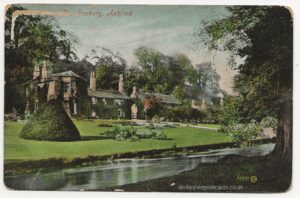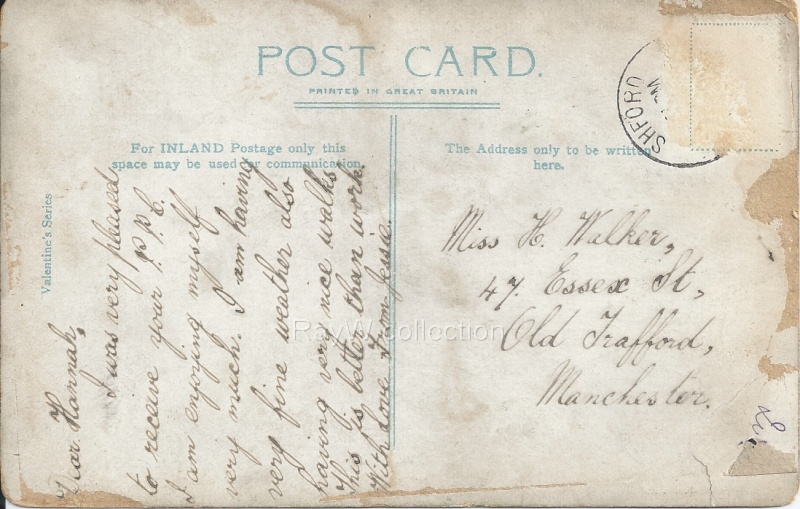Ashford in the Water postcard of The Rookery where the 6th Duke of Devonshire installed his mistress Elizabeth Warwick in 1829, and it became the first home of the Duke & Duchess of Devonshire after their marriage in 1941.
Unfortunately this old Derbyshire postcard from the Valentine’s Series is badly damaged. Corners severely rounded and a section of the front top left hand corner removed.
The stamp has also been removed but although the date has been destroyed enough of the postmark remains to show that it was sent from ASHFORD to a Miss Hannah Walker of Old Trafford, Manchester.
from Derbyshire Heritage
Ashford in the Water was recorded as Æscforda in 926 and in the Domesday Book in 1086 as Aisseford 1086, meaning ‘the place at the ford where the ash trees grow’. It went through several variations in name until becoming named Ashford in 1577 on the Saxton Map of Derbyshire, Ashford in the watter in the 1697 Bateman manuscripts in Chatsworth, Ashford in Burdett’s 1791 map of Derbyshire and the addition of “in-the-Water” occurred in the late 17th century.
The village passed to the Cavendish family in the 16th century (from the Nevilles) and finally sold off in the 1950s to pay death duties.
Ashford was the centre of the Black Marble industry, using locally quarried and mined materials to produce finely inlaid ornamental work. The works of Henry Watson, founded in 1748, were in use until 1905. Most of the site now lies under the A6.
Until 1931, the A6 road passed through Ashford in the Water and crossed the River Wye over an old bridge near the cricket ground.
A curious bridge inscription is carved in the stone of this old bridge which reads – “M Hyde 1664”.
This relates to a tragic accident when the Reverend Hyde, Vicar of Bakewell, was thrown from his horse and drowned in the river.
There is an inscription on Cromford Bridge where a similar incident occurred in 1697 but thankfully in that case the rider, Benjamin Hayward, survived.



